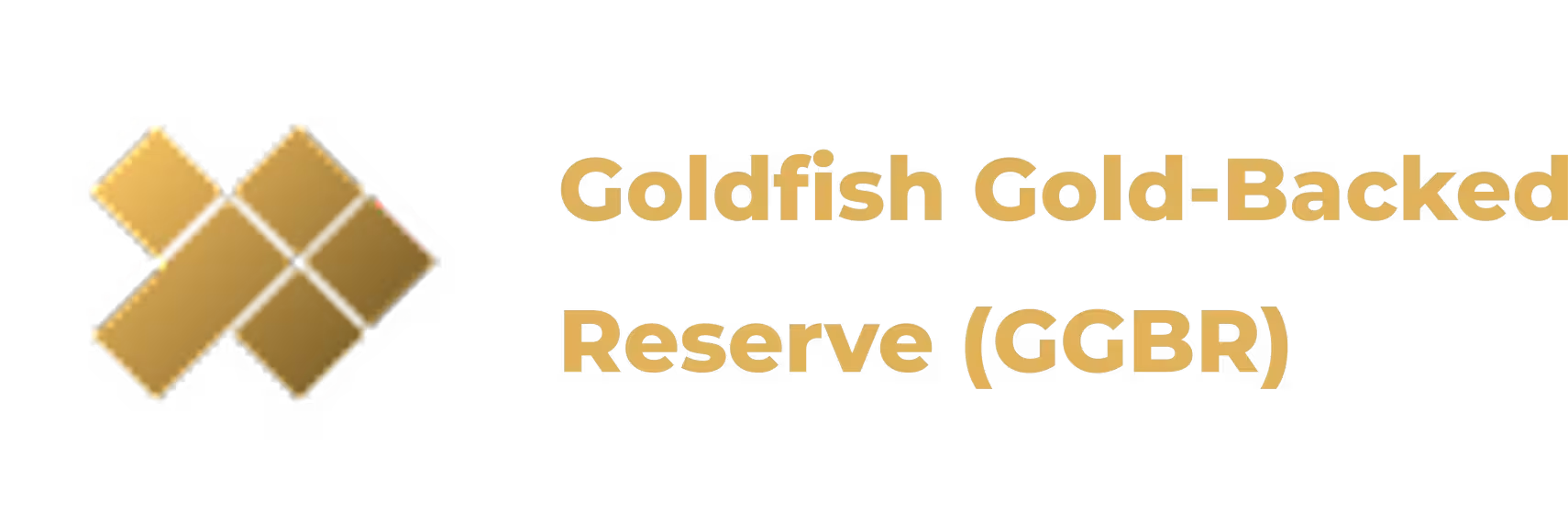The current financial landscape is marked by a profound debate concerning the future of money and the role of traditional reserve assets. This discussion has recently been amplified by a legislative proposal to revalue the United States’ vast gold reserves and use the ensuing windfall to create a national strategic reserve of Bitcoin. This policy narrative not only highlights the growing prominence of digital assets but also underscores a fundamental schism in economic philosophy: whether to anchor the future in a time-tested, tangible store of value or to embrace a volatile, technology-driven speculation. An analysis of this debate reveals a compelling case for a third option: the investment in gold stablecoins, which combine the proven stability of gold with the technological advantages of digital finance.
Part I: The Great American Gold Revaluation Debate: A New Catalyst for Hard Assets?
The prospect of the U.S. government revaluing its gold reserves has become a focal point of discussion in monetary circles. This idea is not a mere theoretical exercise but a strategic consideration driven by a convergence of economic pressures and a growing national debt crisis. The debate centers on how to address a fundamental anomaly in the U.S. balance sheet: the vast disparity between the official book value of its gold holdings and their current market value.
1.1. The Anomaly of the U.S. Gold Reserves
The United States Treasury reportedly holds 261.5 million ounces of gold, a staggering physical asset that has been held on the books at an anachronistic valuation of just $42.22 per ounce since 1973 . At this fixed rate, the entirety of the nation’s gold reserves represents only about $11 billion on the official balance sheet . This valuation stands in stark contrast to the current market price of gold. If these reserves were revalued to their modern market price, the Treasury could theoretically realize an accounting “windfall” of over $700 billion. This process would be a strategic monetary policy move and an accounting mechanism rather than a confiscation of physical gold from citizens. It would involve the Treasury reissuing gold certificates at a new, higher valuation to the Federal Reserve, with the difference in value being recognized as an accounting profit. This profit could then be used to reduce the outstanding national debt or to fund government operations. The historical precedent for such a move is the 1933 revaluation of gold, which, while creating significant disruption, did achieve certain economic objectives. The potential for such a move is particularly compelling given the scale of the U.S. debt and the increasing burden of interest payments, which now consume a significant portion of the federal budget. The fact that every $4,000 increase in the gold price could yield the Treasury a $1 trillion gain on its balance sheet highlights the powerful incentive for political action on this front.
1.2. The ‘Bitcoin Act of 2025’ and its Fundamental Misdirection
In response to this potential financial maneuver, a competing legislative proposal has emerged: the “Bitcoin Act of 2025”. Introduced in the Senate by Congressman Nick Begich and Senator Cynthia Lummis, the bill’s primary objective is to establish a “Strategic Bitcoin Reserve” (SBR) using the revaluation windfall from the U.S. gold reserves. Proponents argue that this would enhance America’s financial security and global leadership in digital assets, with the bill aiming to be “budget-neutral” by utilizing Federal Reserve remittances and gold revaluation gains.
However, a closer examination reveals that the Bitcoin Act represents a fundamental misdirection. It proposes to use the unlocked value of a tangible, time-tested reserve asset (gold) to acquire a highly speculative, technology-based instrument (Bitcoin). Gold’s value is rooted in its physical scarcity, a history of thousands of years as a store of value, and its acceptance as a reserve asset by central banks worldwide. In contrast, Bitcoin’s value is a function of its network and is subject to significant price swings and speculative sentiment, with no assurance that it will gain widespread adoption as anything other than a speculative asset. The technology sector is littered with companies that once had immense value but were ultimately replaced by something users preferred, with examples like Yahoo!, Blackberry, and Myspace serving as cautionary tales. This risk of technological obsolescence is a critical factor that gold, as a physical commodity, does not face. The Bitcoin Act, therefore, frames a speculative bet as a prudent strategic policy, potentially benefiting a few holders while risking the value derived from a universally trusted asset .
Part II: The Digital Gold Standard: From Tangible Bar to Tokenized Value
The narrative around a potential U.S. gold revaluation draws attention to gold’s enduring status as a strategic asset. However, while gold’s role as a store of value is widely accepted, traditional methods of investing in it present significant challenges related to accessibility, liquidity, and cost. The emergence of gold stablecoins offers a compelling solution, bridging the historical integrity of gold with the innovative efficiencies of blockchain technology.
2.1. The Enduring Case for Gold as an Asset
Gold has been a trusted store of value for centuries, a key reason it has been incorporated into portfolios and central bank reserves. Its value is perceived as intrinsic and finite, which contrasts sharply with fiat currencies that can be devalued through excessive printing by central banks. Gold’s price often acts as a hedge against inflation and a safe haven during periods of market volatility and geopolitical uncertainty, as evidenced by its performance during the COVID-19 pandemic and other crises.
While the data shows that gold is not a perfect short-term hedge and its inflation-adjusted price has struggled to return to its 1980 peak, its value is fundamentally driven by deeper macroeconomic factors. Gold’s price is heavily influenced by movements in real interest rates and, more recently, by historic levels of central bank buying as a means of diversifying away from paper currencies and hedging against fiat currency debasement and geopolitical tensions. This nuanced understanding reinforces gold’s role as a strategic, long-term asset that provides a valuable ballast for a portfolio, especially during periods of global economic uncertainty and de-dollarization.
Part III: A New Contender: Goldfish GGBR Enters the Market
As the U.S. government grapples with its gold policy, the private sector is already pioneering a more efficient and accessible approach to gold ownership. Goldfish, a gold-backed stablecoin developed by GBBR, Inc., represents the next generation of real-world asset tokenization. It is a groundbreaking digital asset designed to bridge the timeless stability of physical gold with the accessibility and modern features of blockchain technology. Goldfish aims to solve the limitations of traditional gold investments, such as high entry barriers, illiquidity, and complex storage, by offering a blockchain-native, micro-fractional asset that is secure, transparent, and environmentally responsible.
Goldfish’s core value proposition is built on several key advantages that differentiate it within the gold stablecoin market:
- Hard-Asset Backing and Overcollateralization: Each Goldfish token represents 1/1000th of a troy ounce of independently confirmed physical gold, providing a direct peg to gold’s spot price. This hard-asset backing offers a hedge against inflation and reduces volatility within a portfolio. Notably, Goldfish’s gold reserves are overcollateralized at a 5:1 ratio, providing a robust buffer against depegging risks.
- Accessibility and Micro-Fractional Ownership: Traditional gold investment often requires significant capital, but with Goldfish, its affordable price point allows for micro-fractional ownership. This democratizes access, enabling a new class of investors to add a gold-backed asset to their portfolios or use it within DeFi applications without a large initial investment.
- Enhanced Transparency and Security: Goldfish builds trust through a multi-layered approach to transparency and security. The physical gold is secured via Uniform Commercial Code (UCC) liens, providing a legal claim to the assets. In addition to regular audits, a public proof-of-reserve dashboard will be available via Oracles for full verifiability. The token reserves are also secured by institutional-grade Fireblocks custody, offering robust compliance and security.
- Physical Redemption and Real-World Utility: Token owners can redeem their Goldfish tokens for physical gold through regulated dealers, adding a layer of flexibility and convenience. The token is also designed for interoperability, with current deployment on the Ethereum blockchain and plans to expand to other chains via the Chainlink CCIP protocol, allowing for seamless use across various DeFi ecosystems.
- Commitment to Sustainability: A unique feature of Goldfish is its commitment to ethical and sustainable practices. The gold backing for the tokens is sourced using in situ gold, an environmentally responsible method that significantly reduces the carbon footprint and environmental damage associated with traditional gold mining.

4.1. Risk Mitigation: Custody, Liquidity, and Regulation
The success of gold stablecoins hinges on a transparent and secure chain of trust, which must address both the physical custody of the gold and the digital security of the tokens. Custody risk is paramount; if the gold reserves are mismanaged or misrepresented, the token’s credibility collapses. Reputable gold stablecoin issuers mitigate this by undergoing regular third-party audits and providing on-chain proof-of-reserves. For institutional investors, the security of digital assets is a critical concern. This has led to the emergence of dedicated digital custody providers like Fireblocks, which offer multi-layered security, zero counterparty risk, and audit trails for every transaction. By using such solutions, institutional investors can participate in the digital gold market with a level of security and compliance that is on par with, or even exceeds, that of traditional finance. The future of gold stablecoins will likely extend beyond simple financial utility to include Environmental, Social, and Governance (ESG) factors, as investors seek to ensure that their assets are not only financially sound but also ethically sourced and transparently managed . This evolution will be a key driver for broader institutional adoption.
Conclusion
The debate over the revaluation of U.S. gold reserves and the competing proposals for its use highlights a moment of significant strategic decision-making in global finance. While the “Bitcoin Act of 2025” frames a speculative, technology-driven asset as a new form of national reserve, a deeper analysis reveals a more compelling and resilient path forward. Gold, with its proven history as a tangible store of value, remains a foundational asset. The future of this asset, however, is being redefined by innovative digital solutions. Gold stablecoins, such as the new Goldfish GGBR token, represent a superior approach to modernizing asset reserves by combining gold’s legacy of trust with the efficiency and utility of blockchain technology. Unlike fiat-backed stablecoins, which are subject to systemic risks inherent in the traditional banking system, gold-backed tokens offer a hedge against both currency devaluation and counterparty risk.
For the forward-thinking investor, Goldfish GGBR offers a unique proposition: a non-speculative, liquid, inflation-hedging asset. The market is maturing rapidly, with a growing emphasis on physical custody, on-chain transparency, and institutional-grade digital security. This new era of digital gold is not a replacement for traditional assets but an evolution, offering a more liquid, accessible, and versatile way to hold and utilize one of the world’s oldest and most trusted stores of value.



